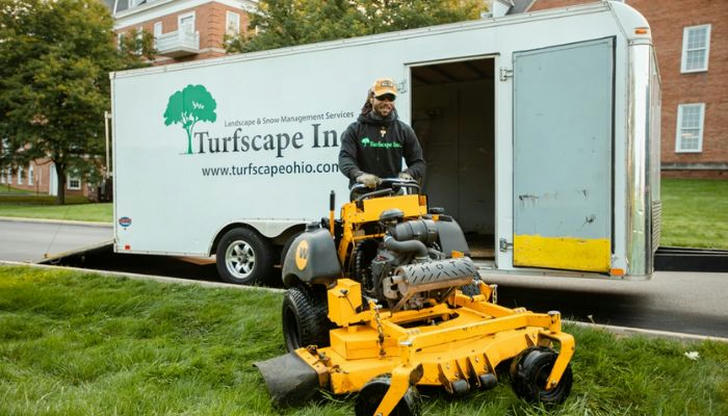5 Benefits Of Planning A Fall Or Winter Project For Your Yard
When temperatures drop and leaves begin to fall, many homeowners assume landscaping should pause until spring. However, fall and winter are actually the best seasons to start your yard project. Whether you want to redesign your garden, install a patio, or improve drainage, the cooler months offer unique advantages that can save time, money, and effort.
In this article, we’ll explore the five key benefits of planning a yard project in the fall or winter, along with practical tips to help you get started.

1. Off-Season Discounts and Faster Completion
Spring and summer are the busiest seasons for landscaping, with contractors fully booked and prices often inflated due to high demand. By planning your project in fall or winter, you benefit from:
✅ Lower costs – Many landscapers offer off-season discounts.
✅ Faster project completion – With fewer jobs lined up,professionals can focus on your project.
✅ More scheduling flexibility – You’ll have an easier time booking top-rated contractors.
🔹 Pro Tip: Start researching landscaping companies in early fall. Ask about off-season discounts and availability—some professionals will even offer bundled services at reduced rates.
2. Stronger, Healthier Plants
Planting in the fall or winter allows trees, shrubs, and perennials to develop strong root systems before the growing season begins. The cooler weather and increased moisture create less stress on new plants, making them healthier by spring.
✅ Stronger roots – Plants can focus on root growth instead of leaf production.
✅ Better survival rates – Less exposure to extreme heat and water loss.
✅ More vibrant plants in spring – Your garden will be ready to bloom as soon as warm weather arrives.
🔹 Best Fall & Winter Plants:
Trees: Maple, Oak, Dogwood
Shrubs: Hydrangeas, Azaleas, Boxwood
Perennials: Lavender, Peonies, Hostas
🔹 Pro Tip: Apply a layer of mulch around newly planted trees and shrubs to insulate roots and retain moisture throughout winter.
3. Easier Ground Preparation and Hardscaping
Hardscaping projects like patios, pathways, and retaining walls require extensive groundwork. Fall and winter provide the best soil conditions:
✅ Softer soil – Rain and cooler temperatures make soil easier to dig and shape.
✅ Less foot traffic – Your yard gets less use, meaning less disruption.
✅ Better drainage testing – Rain helps identify problem areas before they become bigger issues.
🔹 Pro Tip: If you’re planning a hardscaping project, choose weather-resistant materials like natural stone, treated wood, or brick to withstand seasonal changes.
4. Clearer Planning and Design Visualization
With plants and trees shedding their leaves, fall and winter provide a clearer view of your entire yard. This makes it easier to:
✅ Identify problem areas – Poor drainage, uneven ground, or overgrown areas are more noticeable.
✅ Experiment with layout changes – No dense foliage blocking your vision.
✅ Take time to research – Without the rush of spring, you can carefully choose materials, plants, and contractors.
🔹 Pro Tip: Take photos of your yard in winter and sketch out different layout ideas. If you’re unsure, consult a landscape designer to develop a blueprint that maximizes your space.
5. Ready-to-Use Yard by Spring
Starting your yard project in fall or winter means that by the time spring arrives, your outdoor space is already transformed and ready for use.
✅ No waiting for construction – Avoid long spring and summer delays.
✅ More time for finishing touches – Use early spring for final details like decor and furniture.
✅ Immediate enjoyment – Host gatherings, plant flowers, or relax in your newly designed space as soon as warm weather returns.
Real-Life Examples: Fall & Winter Landscaping in Action
Case 1: Saving Money with Off-Season Discounts
John and Lisa wanted to install an outdoor deck for entertaining guests. In the summer, contractors were fully booked, and prices were high. Instead, they waited until November, securing a 15% discount and getting the project done in half the estimated time due to the contractor’s reduced workload.
Case 2: Planting for a Stronger, Healthier Garden
Samantha planted Japanese Maple trees in October, allowing them to develop strong root systems before spring. Her neighbor, who planted the same trees in April, struggled with heat stress and had to water twice as much to keep them alive.
Final Thoughts: Start Your Yard Project This Fall or Winter
Instead of waiting for spring, take advantage of fall and winter to start your landscaping project.
✅ Save money with off-season discounts.
✅ Ensure healthier plants with early root establishment.
✅ Work with optimal soil conditions for hardscaping.
✅ Plan with clarity when your yard is at its most visible.
✅ Enjoy your space immediately when warm weather returns.
With the right strategy, your dream yard can be ready just in time for spring. Start planning today! 🌿🍂❄️
